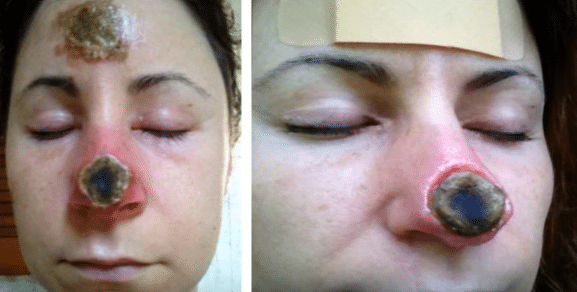Latissimus Dorsi: The latissimus dorsi is an enormous, flat muscle on the back that draws to the sides, behind the arm, and is partly camouflaged by the trapezius on the back near thmidlifene. The worst (plurality dorsi) comes from Latin and means “broadest [muscle] of the back”, from “latissimus” (Latin: broadest)’ and “dorsum”. The pair of muscles is regularly known as “lats”, especially among bodybuilders. The latissimus dorsi is the largest tendon in the upper body.
The latissimus dorsi is answerable for extension, adduction, the transverse extension also known as horizontal kidnapping, flexion from an extended position, and (medial) internal orbit of the shoulder joint. It also has a harmonious role in extension and oblique flexion of the lumbar vertebra

Latissimus Dorsi Muscle
The latissimus dorsi tendon is one of the largest tendon in the back. Their muscle is divided into two segments, which are constructed symmetrically along the determination. The tendon is located in the heart of the back, and it is partially covered by the trapezius. It comes from along the seventh thoracic vertebra (T7) region of the spine and prolongs to its insertion point on the humerus. The muscle also protects the lower tip of the scapula or shoulder blade. When tightened, the muscle works at extending, adducting, and swiveling the arm. Because of its size and central neighborhood, injury to this muscle can be debilitating.

Injuries may include rips and tears. Once aggravated, the latissimus dorsi muscle is often the source of chronic shoulder and neck pain, and it can cause tendonitis of the shoulder joint. The thoracodorsal nerve serves this muscle. This nerve branches from the brachial plexus’ posterior cord and follows the route of the subscapular artery.
The latissimus dorsi tendon, whose name means “broadest tendon of the back,” is one of the widest muscles in the personal body. Also known as the “lat,” it is a large, flat triangular meat that is not used energetically in common daily activities but is an important muscle in many pieces of training such as pull-ups, chin-ups, lat pulldowns, and swimming. The muscle runs between the trunk, via a comprehensive attachment, and the humerus by a narrow tendon It, therefore, acts on the shoulder joint. The remarkable border of latissimus dorsi forms the lower border of the triangle of auscultation. The lateral boundary of the muscle forms the medial boundary of the lumbar triangle.
A muscular slip, the axillary arch, varying from 7 to 10 cm in length, and from 5 to 15 mm in breadth, occasionally springs from the upper edge of the latissimus dorsi about the middle of the posterior fold of the axilla, and crosses the axilla in front of the axillary vessels and nerves, to join the undersurface of the tendon of the pectoralis major, the coracobrachialis, or the fascia over the biceps brachii. This axillary arch crosses the axillary artery, just above the spot usually selected for the application of a ligature, and may mislead a surgeon. Guy et al. extensively described this muscular variant using MRI data and positively correlated its presence with symptoms of neurological impingement.
Latissimus Dorsi Pain
The latissimus dorsi muscle is a large, triangularly shaped back muscle that helps you do things like pull-ups, swimming and even breathing.
The lats are superficially located, which means they are clearly visible (when the skin is removed). To state it another way, you don’t have to dissect away layers of muscles to locate the lats. And luckily for we non-medical personnel, (when we look at people with well-developed back muscles in particular) you don’t absolutely have to remove the skin to notice the lats; instead, you can identify this important back muscle by its shape.
In general, although not always, each end of a muscle attaches to the bone. These places of attachment are known as the origin and insertion of a muscle.
When it comes to the lats, the origin is complicated, but the insertion is simple. At the top, the lats muscle originates from the bottom six thoracic vertebrae and the last three or four ribs.1 Part of the origin also includes the thoracolumbar fascia at the level of the lumbar and sacral vertebrae, as well as the back one-third of the outside part of the top of your hip bone. And finally, the origin of the lats includes just a tiny little bit of the bottom angle of your shoulder blade.
As the muscle fibers of the lats extend from the origin to the insertion point (the insertion for the lats is located on the inner aspect of your upper arm bone, just below the shoulder joint) they taper into a point. This wide origin into a pinpointed insertion forms of the muscle, a triangular-like shape.
The latissimus dorsi muscle is innervated by the long scapular nerve, also known as the thoracodorsal nerve.
Latissimus Dorsi Exercises
Certain exercises can alleviate pain associated with the latissimus dorsi and strengthen the muscle to prevent further injury.
It is essential that a person consult an expert, such as a doctor or personal trainer, to ensure that the exercises are right for them and that they are using correct form.
The following two exercises can reduce latissimus dorsi pain. A doctor can recommend how often a person should perform these exercises. Never continue an exercise that is painful or too uncomfortable:
The latissimus dorsi is used in everyday activities, including:
- expanding the chest for breathing
- pushing against armrests of a chair to stand
It is also used during sports or workouts that feature:
- weightlifting with the upper body
- rowing
- throwing
- performing bench-presses
Below are the most common causes of pain:
- overuse of the muscle
- poor technique
- exercising without warming up
A person may be at greater risk of injury if they:
- have poor posture
- continually reach overhead
- chop wood
- frequently shovel
- golf
- play baseball
- row
- ski
- swim
- play tennis
- do exercises such as pull-ups or lat pulldowns
It is possible to tear the latissimus dorsi, and athletes are at a particular risk. Some athletes most likely to injure this muscle include:
- water skiers
- golfers
- pitchers
- gymnasts
Latissimus Dorsi Stretch
Strong “lats” help you use your arms to pull your body weight up. Good examples of activities that use the lats extensively include doing chin-ups, rock climbing, and swimming.
The lats also assist with the breathing process. They are called an “accessory breathing muscle,” which means they enhance the movements of the trunk during inhalation and exhalation. They do this by lifting (expanding) the circumference of the rib cage when you inhale, which may increase the volume of air that enters your lungs. During exhalation, the latissimus dorsi muscle helps decrease the circumference of the trunk, which may have the effect of squeezing more air out.
With your trunk stationary, the lats turn your arm in, they bring it closer to the midline of your body and they extend your shoulder joint back (essentially the same as bringing your arm back). They can do these movements separately or in combination with one another.
Other things the latissimus dorsi does is to bring the whole shoulder girdle down (called depression), as well as assist in the act of side bending (called lateral flexion). When both lats are working at the same time they assist with arching the spine (called hyperextension) and with tilting the pelvis anteriorly.
A weak lats muscle may interfere with bringing your arm toward your body or your body toward your arm. Weakness may also interrupt your ability to laterally flex your trunk.
If your lats are tight or short, it will be hard to take your arm up in front of you, or out to the side. A short latissimus dorsi muscle tends to keep your shoulder girdle down and forward.
If you have scoliosis (C curve in your spine), one side of your lats muscle will likely be tighter than the other. If you have a kyphosis, the front part of your lats will likely be tight.
Injury to the thoracodorsal nerve, which arises from cervical level six, seven, and eight may result in weakness or paralysis of the latissimus muscles.
Latissimus Dorsi Function
The lateral aspect of the latissimus dorsi muscle builds the posterior border of the axilla. It is felt to contract during resisted adduction of the arm. Its insertion lies anteriorly at the crest of the lesser tuberosity. Clinicians can palpate for a muscle contraction by holding the posterior axillary fold between the finger and thumb and asking the patient to cough.
Depression, adducts, extends and internally rotates the arm at the shoulder
Primary Actions of the Latissimus Dorsi
1. Adduction of the arm at the shoulder
- Agonists: Pectoralis Major, Teres Major, Triceps Brachii (long head)
- Antagonists: Deltoid (middle) Supraspinatus
2. Extension of the arm at the shoulder
- Antagonists: Deltoid (posterior) Triceps brachii (long head), Pectoralis Major (sternal head)
- Antagonists: Deltoid (anterior) Biceps brachii, Coracobrachialis, Pectoralis Major (clavicular head)
3. Internal rotation of the arm at the shoulder
- Agonists: Subscapularis, Deltoid (anterior), Pectoralis Major, Teres Major
- Antagonists: Infraspinatus, Teres minor, Deltoid (posterior)
Secondary Actions of the Latissimus Dorsi
1. Assists with the extension of the trunk
- Agonists: Longissimus thoracis, Iliocostalis lumborum, Iliocostalis thoracis
- Antagonists: Rectus abdominis
2. Assists with flexion of the trunk
- Agonist: Rectus abdominis
- Antagonists: Longissimus thoracis, Iliocostalis lumborum, Iliocostalis thoracis
3. Assists with lateral flexion of the trunk
- Agonist: Quadratus lumborum, Rectus abdominis
- Antagonists: Longissimus thoracis, Iliocostalis lumborum, Iliocostalis thoracis
4. Assists with anterior and lateral pelvic tilt
- Agonist: Rectus abdominis
- Antagonists: Semitendinosus, Semimembranosus, Biceps femoris
5. Assists with depression of the scapula
- Agonists: Serratus Anterior (lower fibers), Trapezius (lower fibers), Pectoralis minor
- Antagonists: Levator Scapulae, Trapezius (upper fibers)
6. Assist with protraction of the scapula
7. Assists with deep inspiration and forced expiration
What does latissimus dorsi muscle do?
Latissimus dorsi muscle. Muscles connecting the upper extremity to the vertebral column. Adducts, extends and internally rotates the arm when the insertion is moved towards the origin. When observing the muscle action of the origin towards the insertion, the lats are a very powerful rotator of the trunk.



